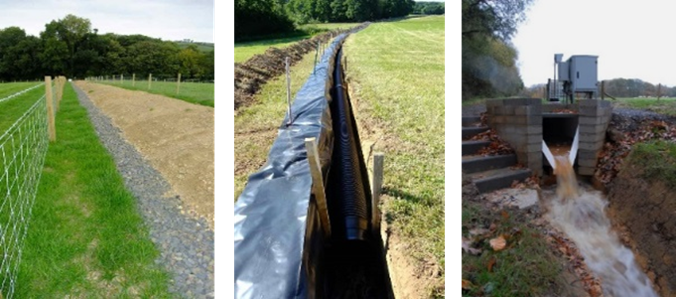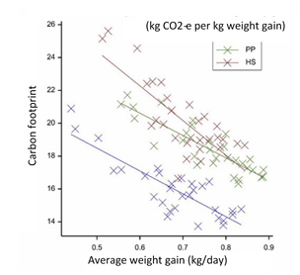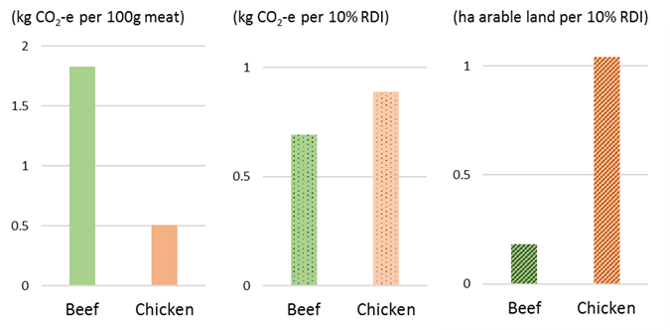Key Research Findings
1. Soil health and flood prevention
1a: Livestock grazing improves soil health and thereby reduces the chance of floods

Fig .1a ‘French drain’ water capturing system at North Wyke.
caption spacer
Each additional cow on pasture has been shown to enable the soil to retain further 360 L/ha/yr of water, rather than losing it downstream along with dissolved nutrients
[Takahashi et al., 2018, Animal].
spacer
spacer
1b. Maintaining soil health, in turn, also helps animals grow more efficiently

Fig. 1b Relationship between soil organic carbon and the animal performance observed at each grazing field.
caption spacer
The positive correlation between soil organic carbon and animal weight gain highlights the importance of soil management in livestock farming
[Takahashi et al., 2018, Animal].
spacer
spacer
spacer
2. Practical solutions for sustainable livestock systems
2a: Clovers can help cut down the carbon footprint of cattle and sheep farms

Fig. 2a Carbon footprint of animals reared at North Wyke is measured at an unprecedentedly high resolution.
caption spacer
The white clover-based system has been shown to be environmentally more efficient as it is not responsible for greenhouse gases produced during the synthesis of nitrogen fertilisers.
[McAuliffe et al., 2018, Journal of Cleaner Production].
spacer
spacer
2b: If you decide to test your soil, you might as well do it right

Fig. 2b Newly identified relationship between the number of soil samples collected and the accuracy of animal growth forecasting.
caption spacer
Infrequent spot sampling commonplace in the industry is unlikely to provide useful information.
[Takahashi et al.,2018, European Federation of Animal Science].
spacer
spacer
spacer
3. Informing agricultural policy in the UK and beyond
3a: There are 'green' cows and 'not-so-green' cows

Fig. 3a Carbon footprints of individual cattle and their growth performances.
caption spacer
Less polluting animals are also economically more profitable, suggesting that environmentally sustainable grazing management is commercially feasible.
[McAuliffe et al., 2018, Journal of Cleaner Production; Balmford et al., 2018, Nature Sustainability].
spacer
spacer
3b: Contrary to common belief, beef may be greener than chicken if consumed responsibly

Fig.3b Carbon footprint of grass-fed beef and free-range chicken per weight of meat (left) and per contribution to recommended daily intake of 12 essential nutrients (centre).
caption spacer
The reversal is due to high levels of iron, zinc, vitamin B12, omega-3 fatty acids and other beneficial nutrients found in grass-fed beef. Beef also requires less land suitable for arable production (right).
[McAuliffe et al., 2018, Food and Energy Security; Lee et al., 2018, European Federation of Animal Science].
